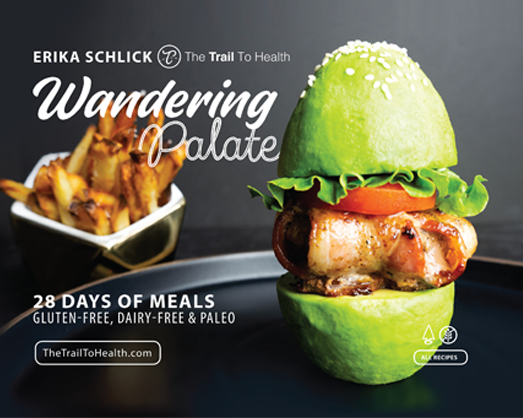Benefits of Wild vs Farmed Salmon
Since getting diagnosed with Celiac Disease in 2012, along with a long list of food allergies, my diet has consisted of high-quality proteins, vegetables and healthy fats. While there tends to be a general assumption that seafood is a healthy protein option, let’s dive a little deeper into what kind of seafood we should be eating, and more importantly, where it comes from.
High-quality seafood proteins like halibut, cod and salmon are great choices for your mains. I personally love wild salmon because it’s chock-full of Omega-3 fatty acids, Vitamin D, and antioxidants, plus it’s quick to prepare, delicious and gluten-free. But before you hop to the market, let’s breakdown the key differences and benefits of wild vs. farmed salmon.
1. Wild Salmon have Omega Health Benefits
Salmon is an excellent source of the essential Omega 3-fatty acids, EPA and DHA. These fatty acids have been proven to lower blood pressure, reduce the risk of disease, and decrease inflammation. Farmed salmon also have essential fatty acids, however they eat an unnatural diet of corn and grains, which increases their Omega-6 fatty acids, which can actually cause inflammation. In addition, wild salmon are organically full of vitamins B12 and D, mineral iodine, and selenium. A stark contrast to farmed salmon, which have 1/4 the nutrients of wild caught salmon. If you need a bountiful dose of natural vitamins, without the inflammatory fat, grill a filet of Wild King or Sockeye.
2. Naturally Fed vs. Genetically Modified
When it comes to dietary choices, natural versus genetically modified or engineered is a no brainer. Wild salmon are born in freshwater and migrate out into the open ocean to live for a few years before embarking on their long voyage home to their birth stream, where they reproduce. They eat a natural diet of zooplankton, herring and krill and get their peachy hue while traveling upstream to their birthplace. Conversely, farmed salmon are fed an unnatural diet of corn and grains. The feed cycle of the salmon generates its fat content and thus, your fat intake. Wild salmon are freshly-caught in the open waters of the Atlantic and Pacific, rather than in farmed fisheries with unsustainable and harmful conditions.
3. Lean vs. Fatty
Here’s a harsh—but true— fact: farmed salmon have over twice the fat of wild salmon. You read that right, not only is it double as fatty but that fat harbors toxins and contaminants like DDT and PCBs, which have been linked to breast cancer, immune dysfunction and nervous system damage. Alternatively, the fatty acids in wild salmon are leaner, contain higher levels of potassium and zinc and are 32% less fatty than farmed salmon. Healthy fats are crucial to a healthy diet, which is why wild salmon is not only a key source of protein, but also fatty acids which prevent and manage heart disease and lower blood pressure.
Wild salmon has a deep red color while farmed is often lighter with lots of white fat grains
4. Natural Color vs. Artificial Coloring
Now, let’s talk about that infamous salmon hue and how you can easily differentiate between wild and farmed salmon. Wild salmon filets have a deep, red hue with thin lines, whereas farmed salmon are a lighter, pink color with thick fatty white lines. Why are they fattier and a different color? They’re not making that long journey of migration upstream that not only makes the wild salmon so lean, but also changes their color naturally. Furthermore, farmed salmon are fed synthetic pigments to make them look more natural, but there’s nothing natural about artificial coloring. This means that when you eat farmed salmon, you’re eating those synthetic pigments, too. Did you know that farmed salmon were the first animal genetically modified for humans to eat? Seems fishy to me. If that didn’t shock you, research shows that farmed salmon is fattier than pizza.
5. Sustainably Sourced vs. Harmful Fish Farms
What we choose to eat has a direct impact on our environment, the living conditions of wild animals, and ultimately the food chain as we know it. What we know about farmed salmon is that the farms spread disease and sea lice to the wild salmon that are migrating nearby. Aqua farms not only harm the ocean and wild salmon, but they hurt Orca whales. Over 80 percent of farmed salmon are infected with a virus that causes their red blood cells to explode, releasing viral waste into marine habitats where wild species like Orca whales are feeding. Stating the obvious, wild salmon are also exposed to virus’ when they swim by fish farms. In turn, farmed salmon has majorly contributed to the dwindling population of wild salmon, which larger mammals (including ourselves) rely on as a food source. Now, enough of the grim details, let’s get to the good stuff: where to get high-quality, wild salmon and seafood.
Why I Recommend Vital Choice Seafood
Now that we’ve broken down wild salmon vs. farmed salmon and the exponential benefits of wild salmon, let me introduce my favorite source for freshly caught, sustainable seafood. Vital Choice Seafood is one of my personal favorites because they home deliver freshly-caught seafood that is harvested from well-managed and trusted wild fisheries. They work with certified sustainable fisheries in Alaska, and have a high standard to source only the highest quality harvested Alaskan salmon and seafood. Many fisheries flaunting the “wild” label have been caught selling farmed fish. (use code 1VCAF55% OFF first order)
Vital Choice has been endorsed by trusted physicians and world renowned chefs to source only the absolute best wild Alaskan salmon. All of their seafood is free of hazardous mercury levels because they carry species that are organically low in mercury. They also offer certified-pure salmon oil which is gluten-free, made in USA and full of antioxidants that fight aging, help with metabolism, inflammation and overall health.
In a nutshell—or seashell, if you will—Vital Choice cares about their customers’ health, and the wellbeing of the precious supply of wild salmon, which is why I recommend them as your source for wild seafood. Try their freshly-caught wild salmon and order my cookbook, Wandering Palate, which includes tasty recipes like Salmon Cakes or Baked Lemon Salmon for healthy, high-protein and delicious treats!
























